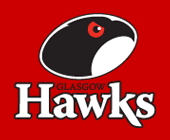|
SCOTLAND ON SUNDAY RPORTS
Iain Morrison: Shaking it all up
Published Date: 15 August 2010
By Iain Morrison
With the new season kicking off next Saturday, Scotland's senior clubs face the biggest shake-up they have experienced since formal leagues were introduced way back in 1973.
A radical and innovative structure has been adopted by Premier Rugby that will see the season split into two distinctive parts, with two 12-team leagues operating up until Christmas to be replaced by three eight-team leagues in the New Year. Teams wiADVERTISEMENT
ll play each other home or away but not both, leading to 18 league fixtures (11 + seven) compared to 22 under the old system.
The changes have been brought about for two separate reasons. Partly to shorten a season that extended into the middle of May last time out, thanks in part to the exceptionally hard winter, but primarily to bring about a greater intensity of rugby at the top of the club game. There is a tacit acknowledgment that the pool of talent is spread a little thin with 12 teams involved at the top table and, to take just one example, Stewarts-Melville leaking 75 points to the eventual champions Currie (right) last season does neither side any good. Reducing Premier One to just eight teams after the break should prevent any such mis-matches, at least in the second half of the season.
Unfortunately the law of unintended consequences may result in a few unwelcome surprises. The first half of the season is bound to be hugely competitive as every team desperately strives to finish in the top eight by Christmas, a position that guarantees Premier One rugby for the following season. There must be a danger that once the eight-team league is established those at the bottom of it, with no prospect of winning and no danger of relegation, will take their foot off the gas, if only subconsciously. As Currie coach Ally Donaldson freely admits, nobody really knows until the system has been put to the test.
"I am a bit reluctant to offer any opinion on the new structure until we have seen how it works," said the man who has won two of the last three championships. "The sole aim of several teams is simple survival in Premier One so there is a danger that some clubs don't have a lot to play for in the second half of the season. There is no question that the season is too long. Players want to play every Saturday of the season but they just don't want that season to last from mid-August to mid-May.
"I like the fact that Premier Two teams have an effective play-off against the bottom of Premier One to get promotion, but I'd like to see play-offs introduced to Premier One.
Look at the interest in the Currie/Ayr game last season; play-offs would mean several games of that intensity, which has to be a good thing."
The structure looks flawed on several counts and the lack of end-of-season play-offs is just one issue. To allow room for cup competitions (domestic and the British and Irish Cup) there is just one league fixture in each of three consecutive months: December, January and February. There is also an inherent inequality in the season, in that some clubs will enjoy more home matches than others, and relegation and promotion may rest on such small issues.
Hopefully the new structure is an improvement on what went before but while that debate continues, no-one doubts that this is a crucial season for the clubs. After a decade of being treated like an embarrassing country cousin by those who ran the "performance" game at Murrayfield, Scotland's best clubs suddenly find that the very same people have lowered the drawbridge and invited them to join the "elite" party.
In a long-overdue move, the best young players in the country who are part of what is now called the Performance Player Development Programme (academy players to you and me) are now scheduled to play club rugby, at least up until December. Someone, somewhere has finally realised that our best young players won't improve through diet, weights and psychology alone; they need to roll up their sleeves and get their hands dirty, learning their trade on the job. The very significant resources that Scotland's best clubs offer are finally being utilised by Murrayfield. Hold the front page: SCOTTISH CLUBS NOT COMPLETELY USELESS… SHOCK! HORROR! GASP!
Ignore for a moment the ill-conceived and ill-fated Gael Force and concentrate instead on the performance of one of Scotland's most impressive clubs in the inaugural British and Irish Cup. Ayr won two of their five outings and, furthermore, two of their three losses were by just one and three points respectively. The best Scottish clubs are perfectly competitive against their English, Welsh and Irish peers.
Ayr offer a template for all ambitious clubs who should realise by now that off-the-field activities are the key to success; never have "Bufties" been so important! They may get the odd brickbat for paying players but if every club was as well-managed as last season's runners-up then Scottish club rugby would be in a very much healthier position. Ayr's semi-professional status is exactly what should be underpinning Scotland's two pro-teams.
After years of being kicked in the ribs like a stray dog, the clubs may take time to respond to the offer of a partnership that Murrayfield is now extending but they shouldn't forget the old adage that there is no such thing as a free lunch. The performance side of the game will want sacrifices from the clubs if they are to keep their precious "elite" status.
This article was posted on 15-Aug-2010, 06:36 by Hugh Barrow.
|









